Guest writer: Anna Nilsson Spets
The shrimp fisherman sits on a tonne of horse, pulling a trawl, back and forth in the shallows off the Belgian coastal town of Koksijde. It's shrimp trawling and I've travelled almost two and a half hours to see this old-fashioned way of fishing, which is actually a UNESCO heritage site.
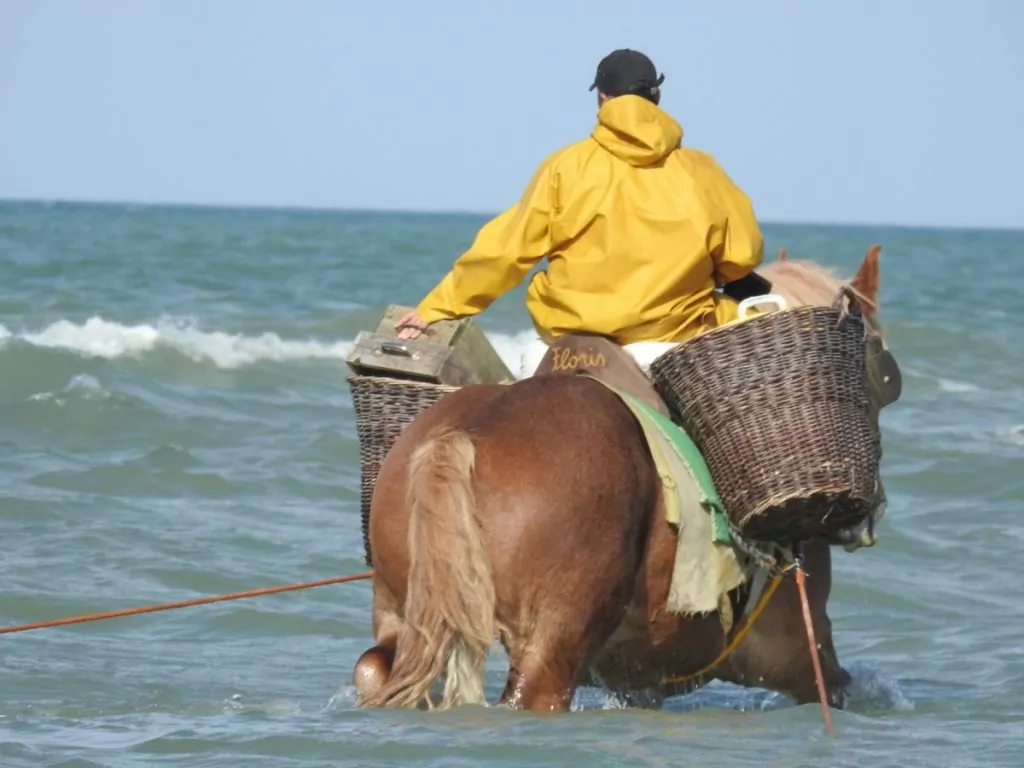
Shrimp trawling on horseback is an ancient occupation that is no longer practised except as a hobby or as a tourist attraction. The tradition of this type of fishing goes back 500 years and was carried out along the Belgian, Dutch and French North Sea coasts. Nowadays, horse trawling is only practised in Belgium and there are only 12 active shrimp fishermen, two of whom are women.
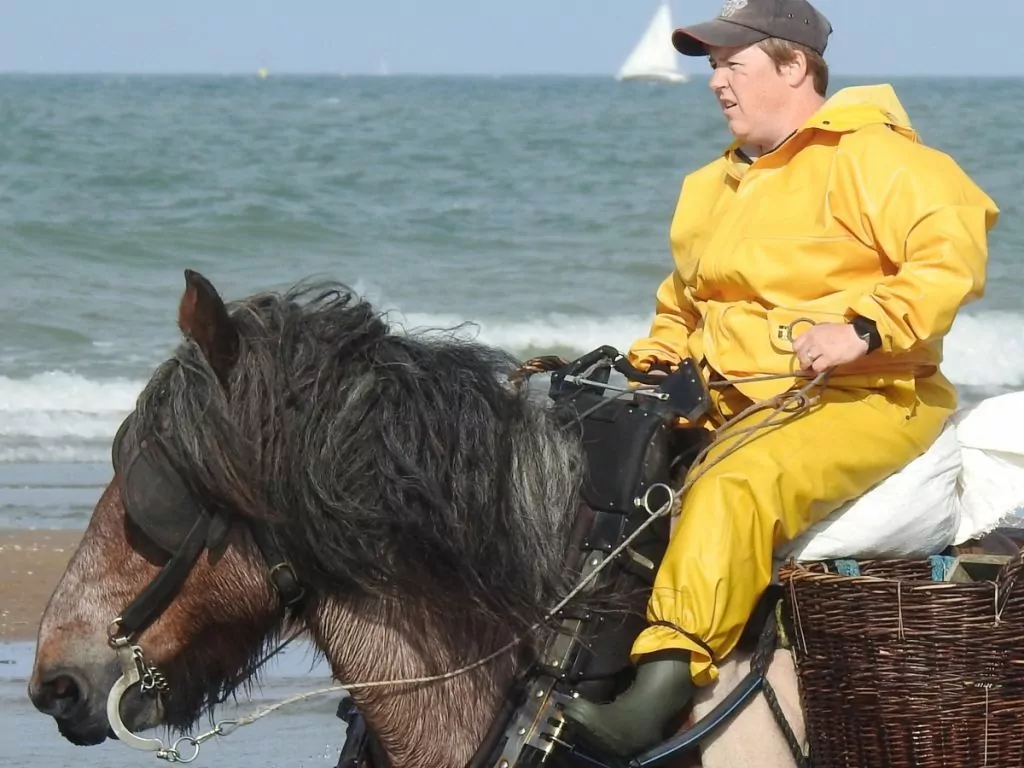
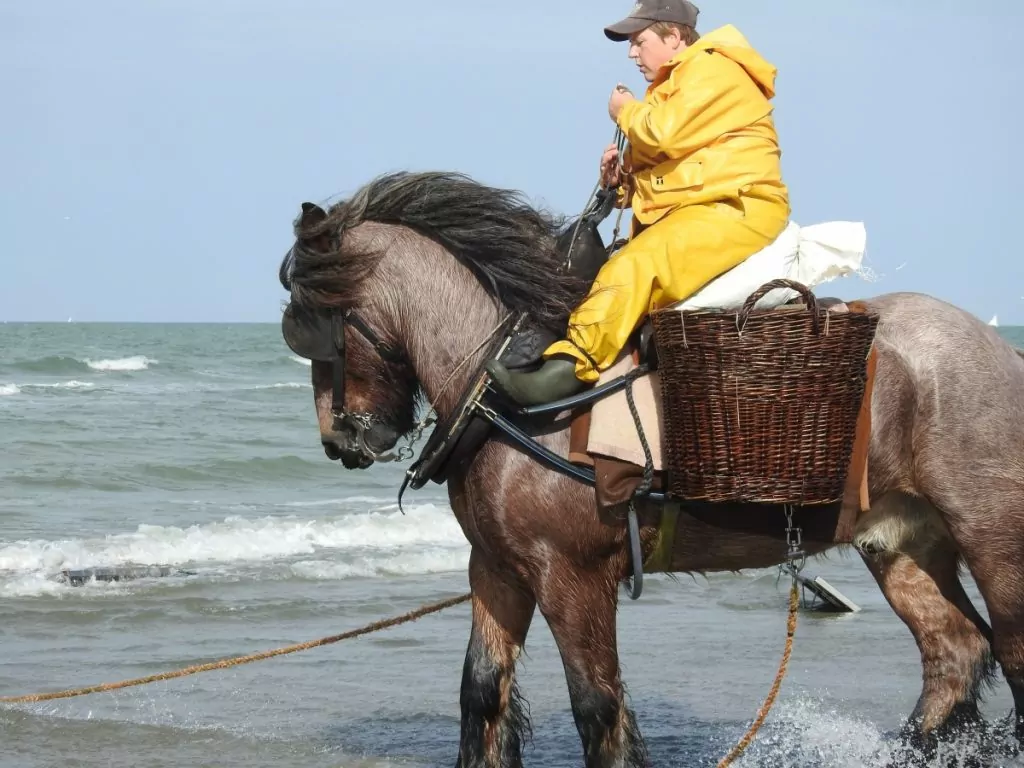
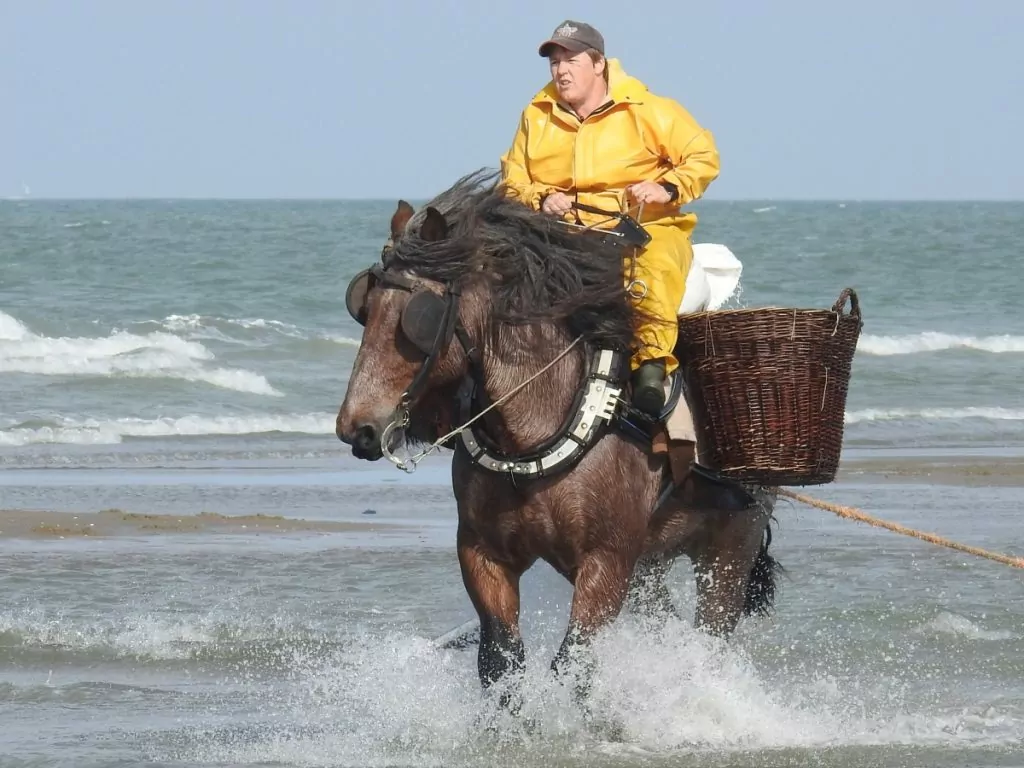
Trawling with horses was a way for poor farmers to supplement their income during the winter months, now trawling is done by boat and gutting is done in other countries.
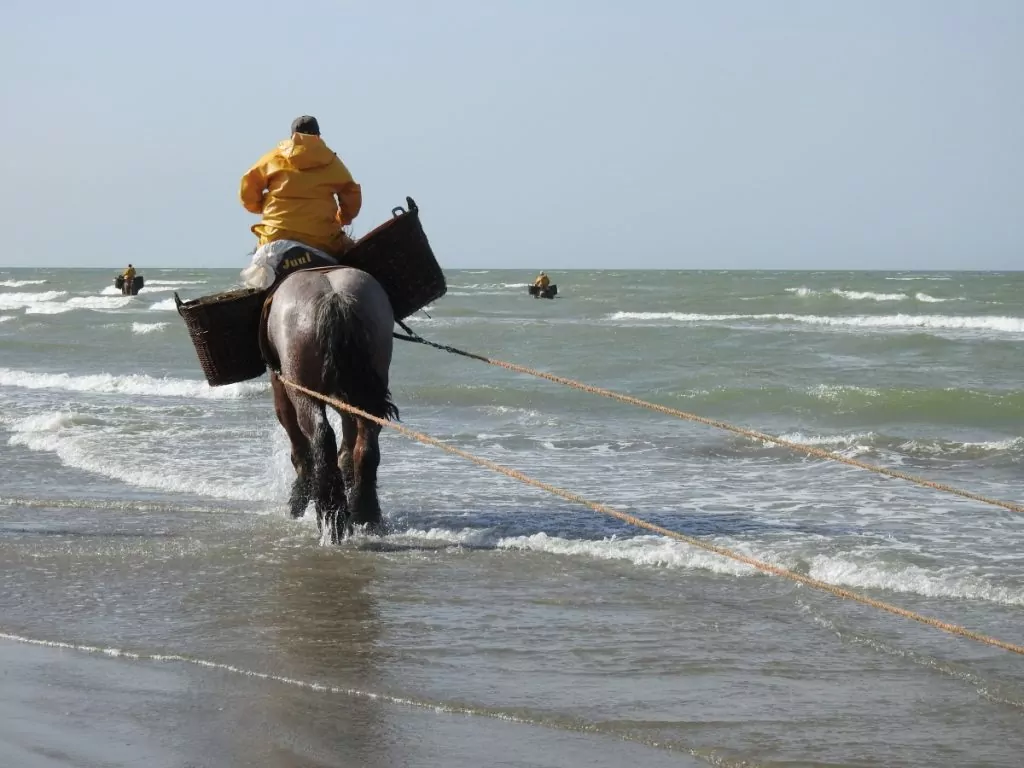
The horses' working day starts at home in the stables, they are harnessed to low carts loaded with nets, baskets and all the necessary items, slowly driving to the beach, meeting up with colleagues, unloading and preparing for trawling.

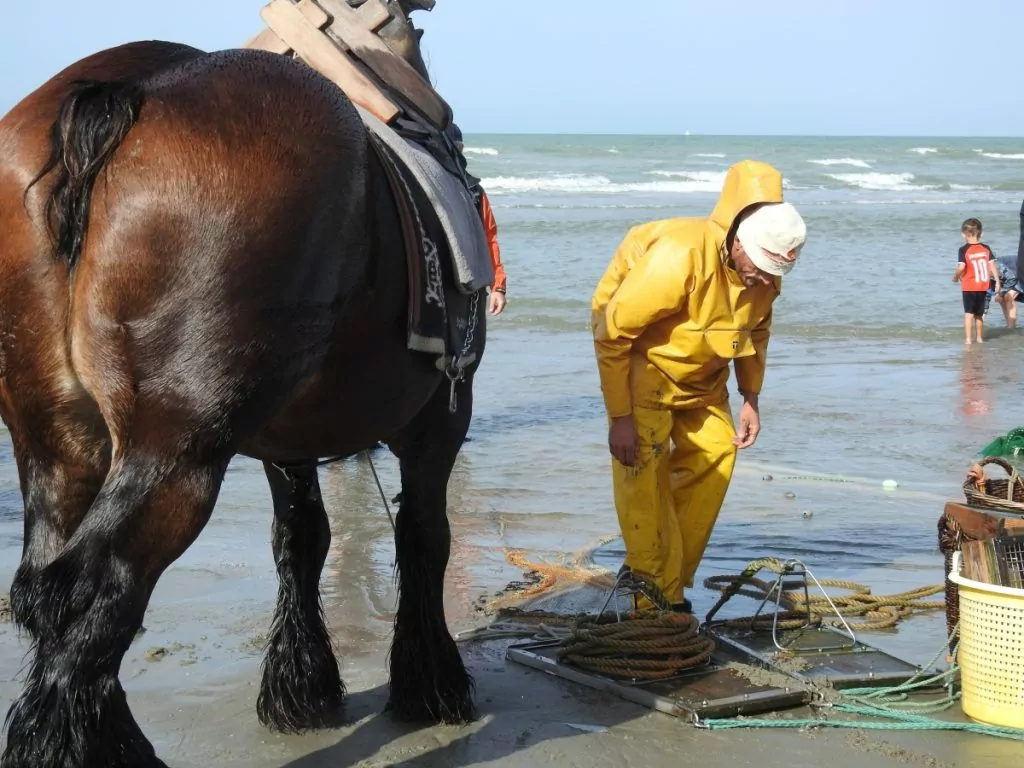
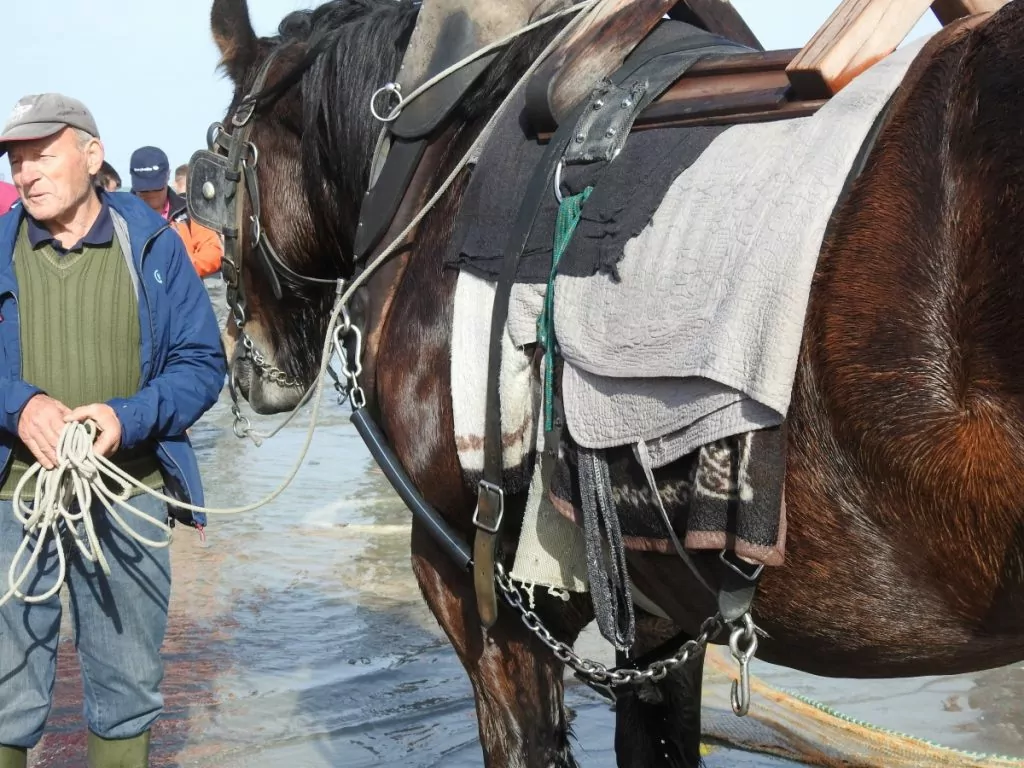
The trawl is a hoop-like net 7-10 metres long. Between the horse and the net are a couple of large wooden discs that serve to scrape up the bottom sand so that the shrimp jump up from their hiding places.
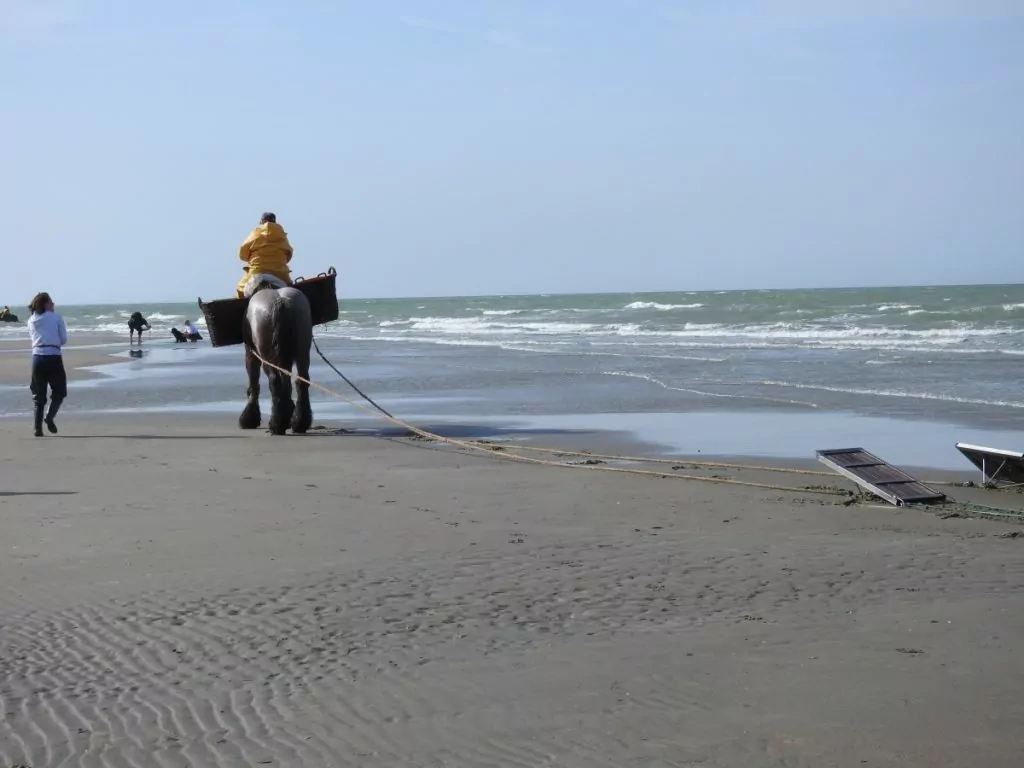
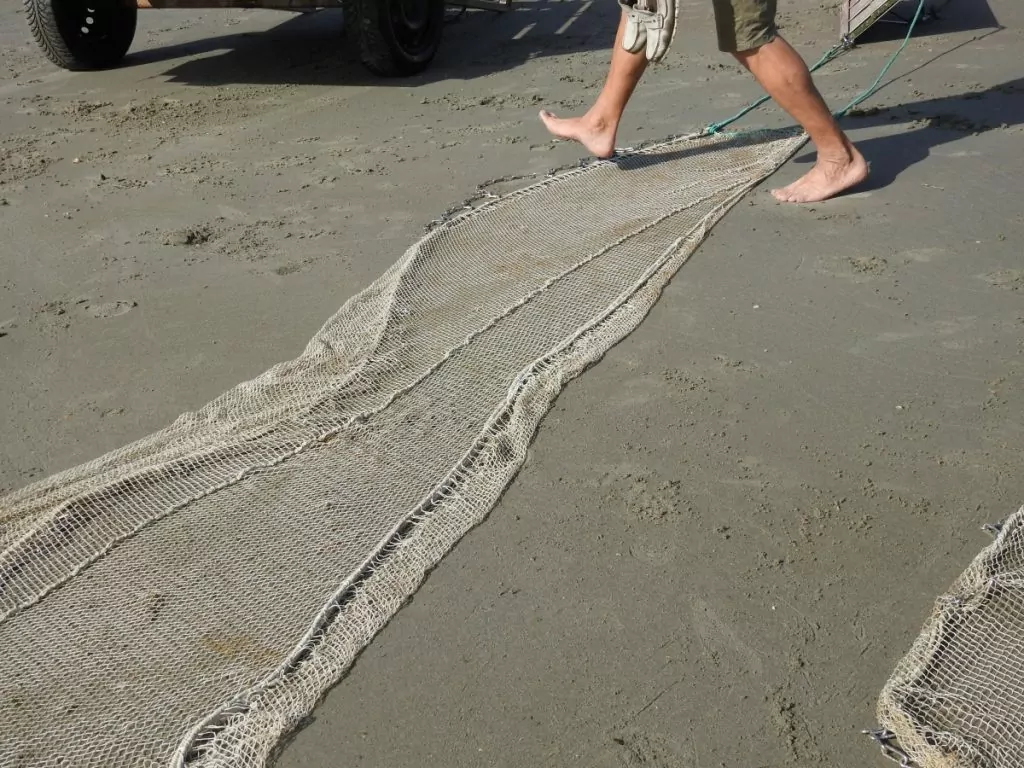
The riders are dressed to protect themselves from water and wind; yellow oilskins make them visible. There is no traditional saddle, but rather a kind of saddle-like wooden stand. This job is undoubtedly very physically demanding with the weather, wind, cold water and heavy poles.
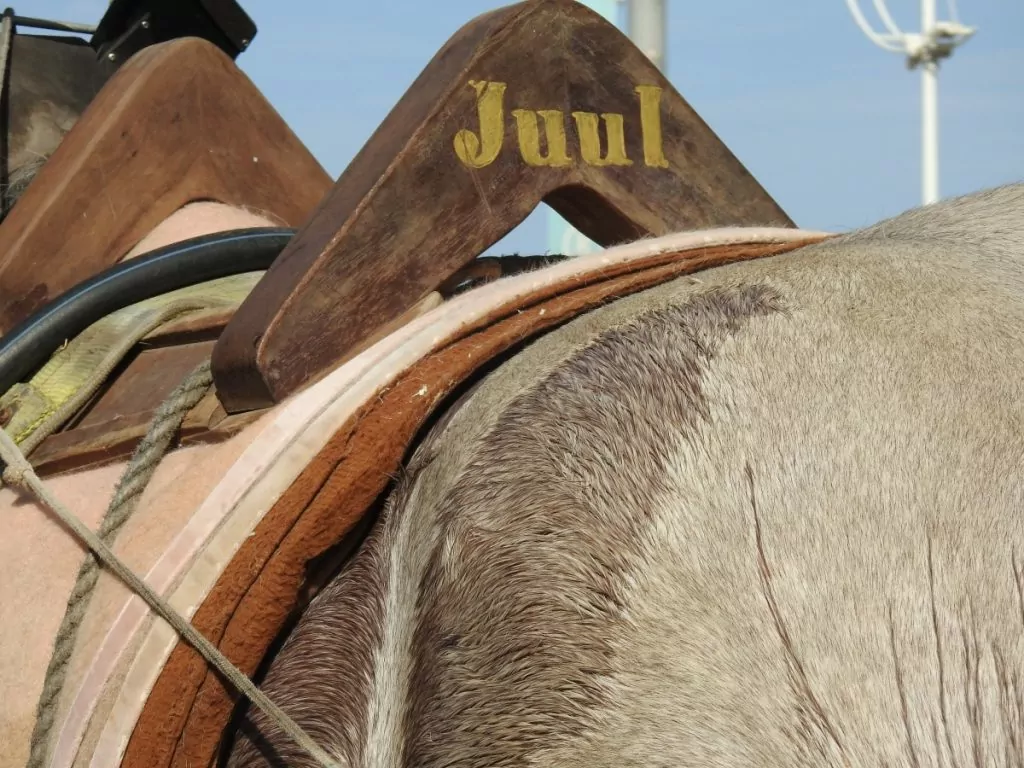
Then the teams wade out until the water reaches about chest height of the horse, they ride back and forth along the coastline, it is low tide and they have about three hours before the tide comes in again.
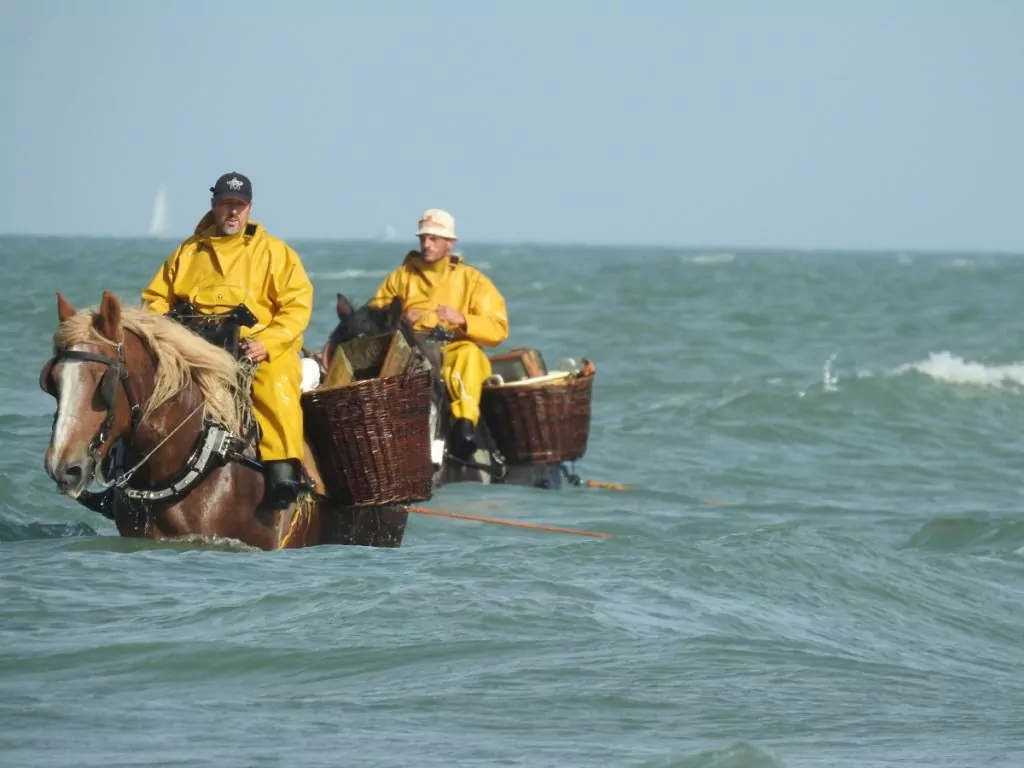
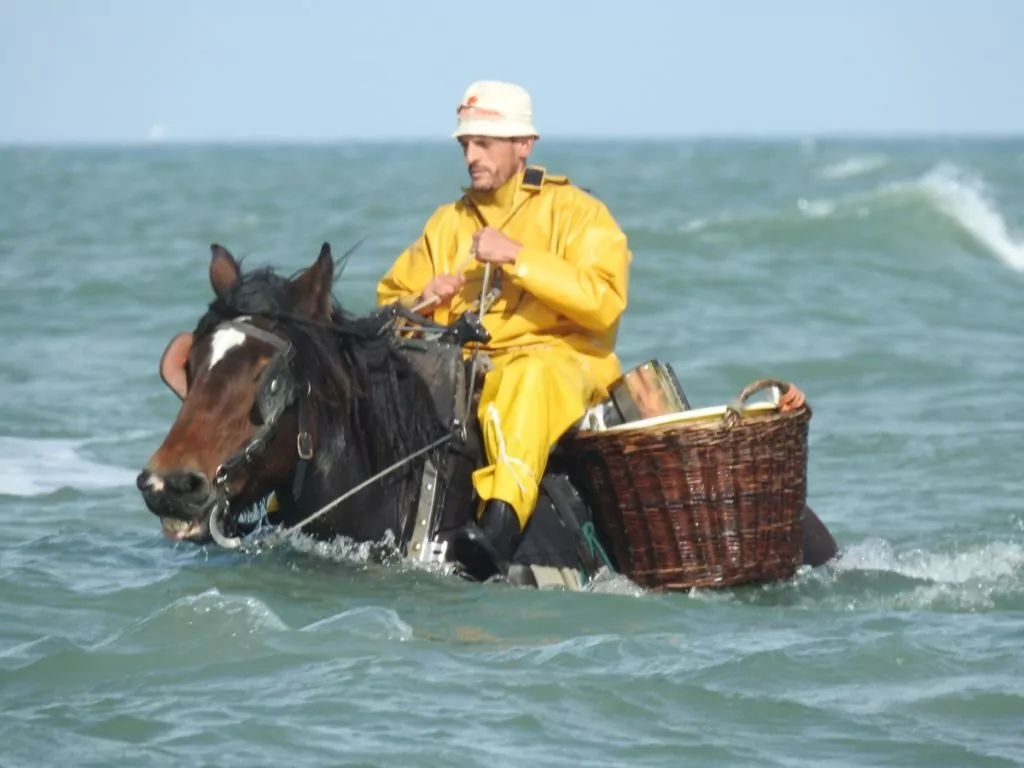
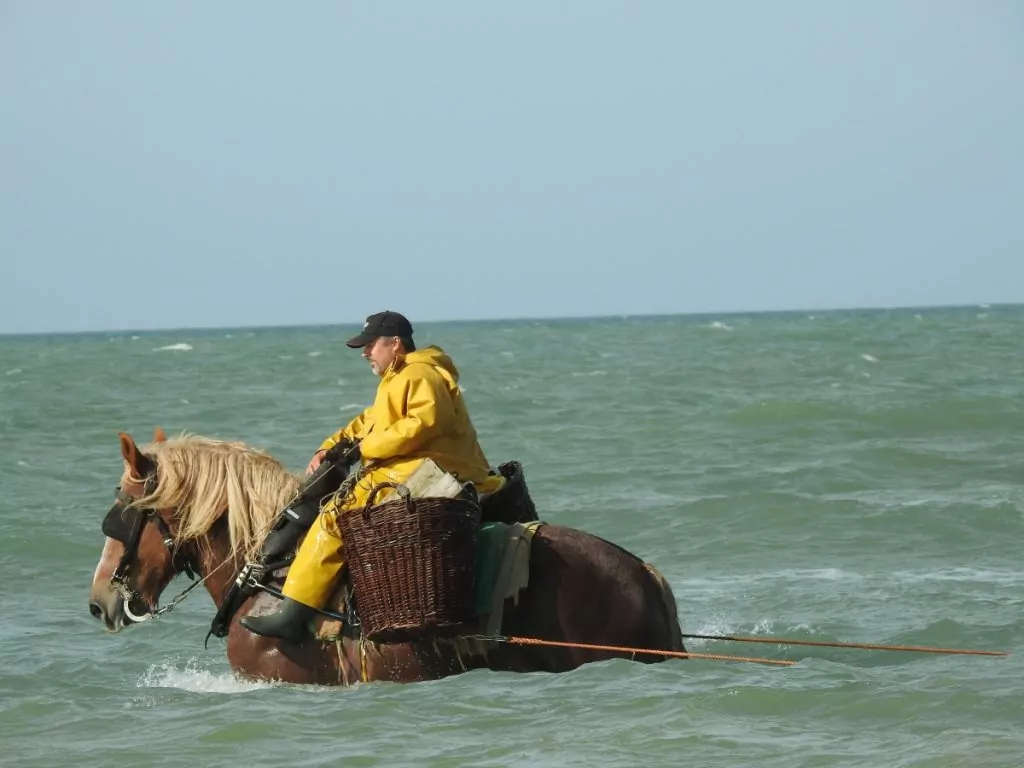
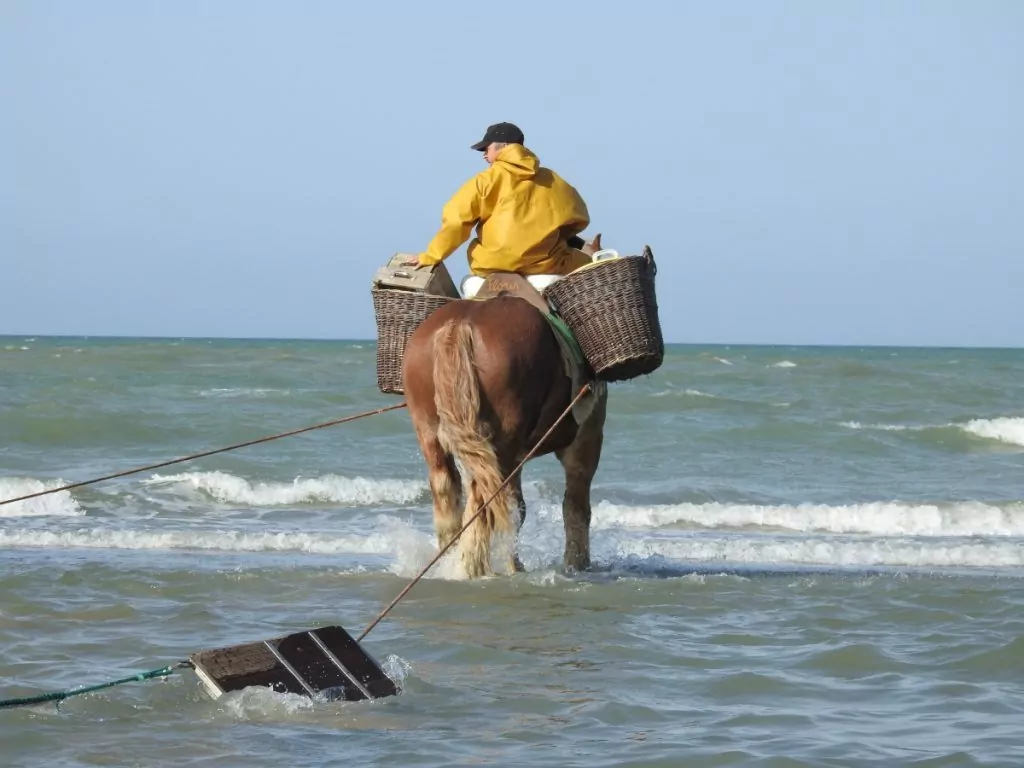
What about the horses ... the marvellously hardy and enormously powerful Brabant horses ...
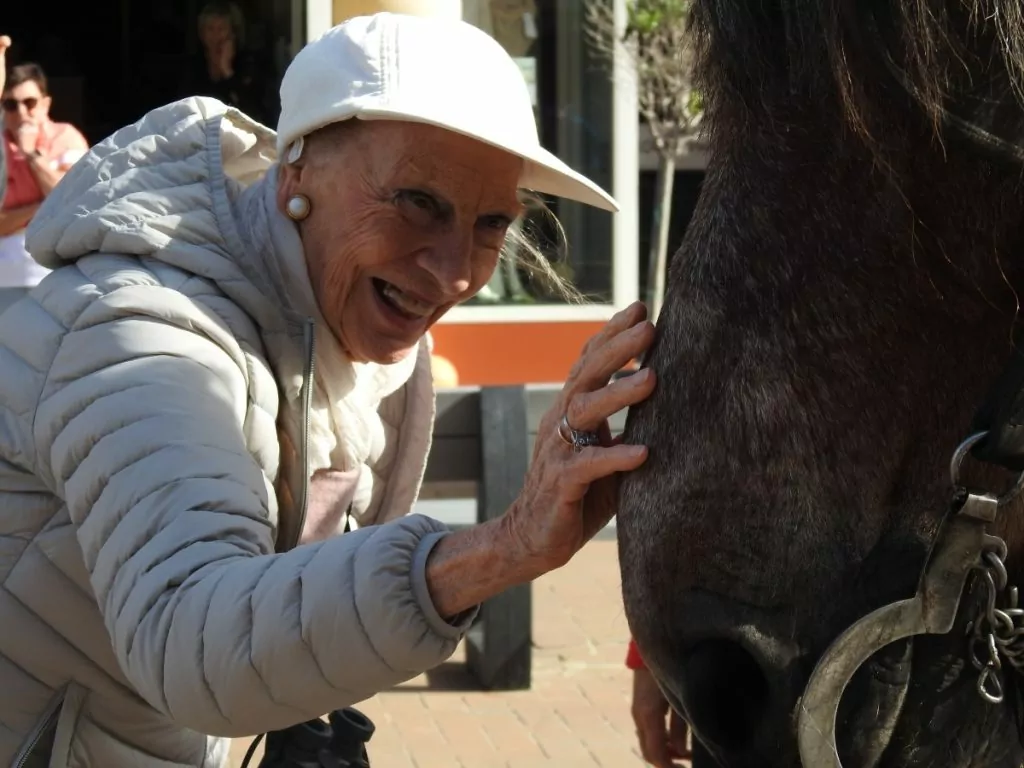
My absolute favourite horse, which unfortunately you don't see so many of in Sweden, but imagine a horse that is a good bit bigger than an Ardennes horse, which by the way is also a Belgian horse breed.
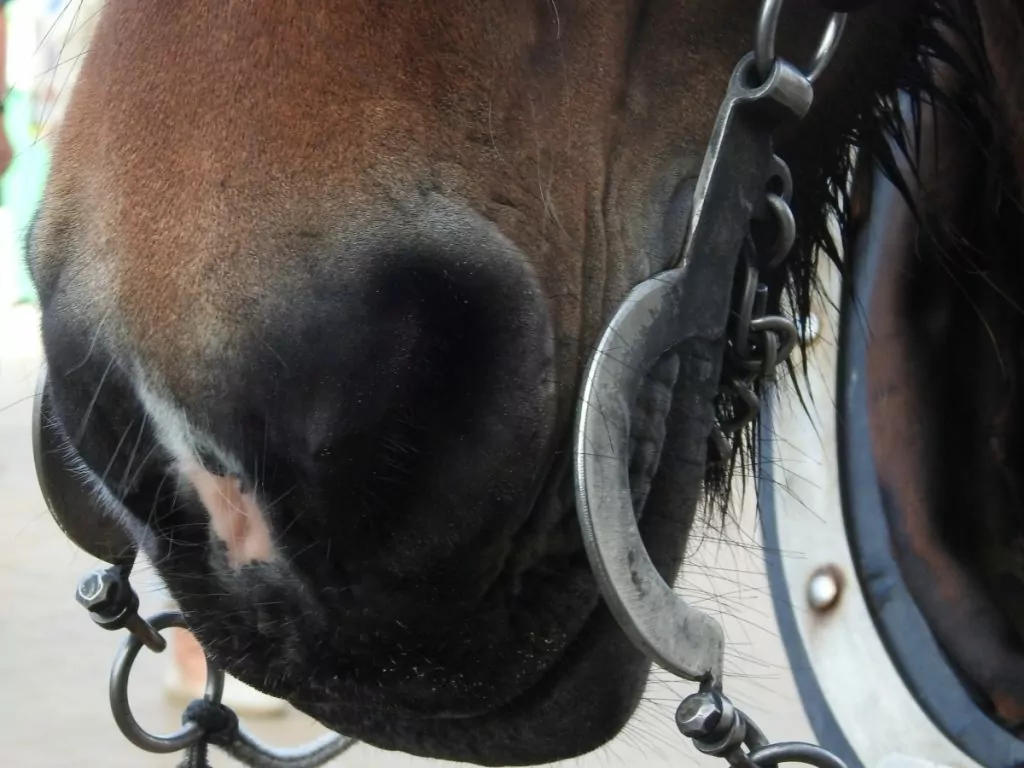
The Brabant weighs around one tonne, i.e. 1000 kilos, so we are not talking about ponies, it is an ancient breed which, in descending order, points us in the direction of the primitive horse. The breed is a cold blood, measuring about 165-175 cm in height at the withers. Colours include fawn, brown and red, brown and greyish grey. Characteristics are, of course, the muscles and the large flat hooves with lots of whiskers.
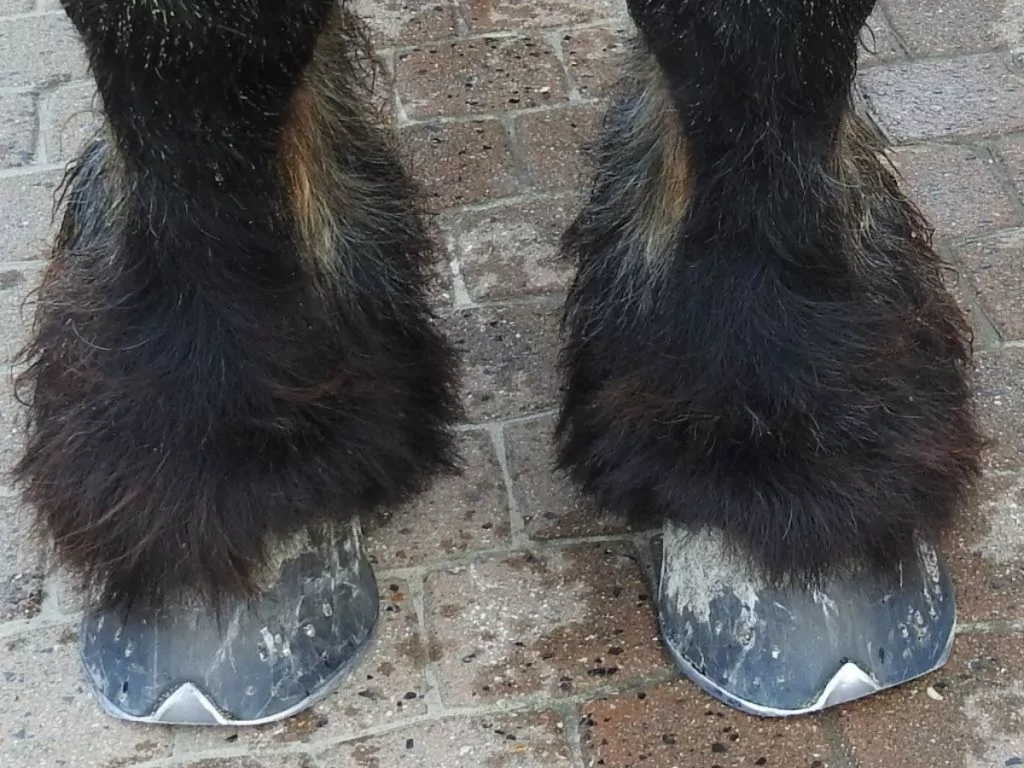
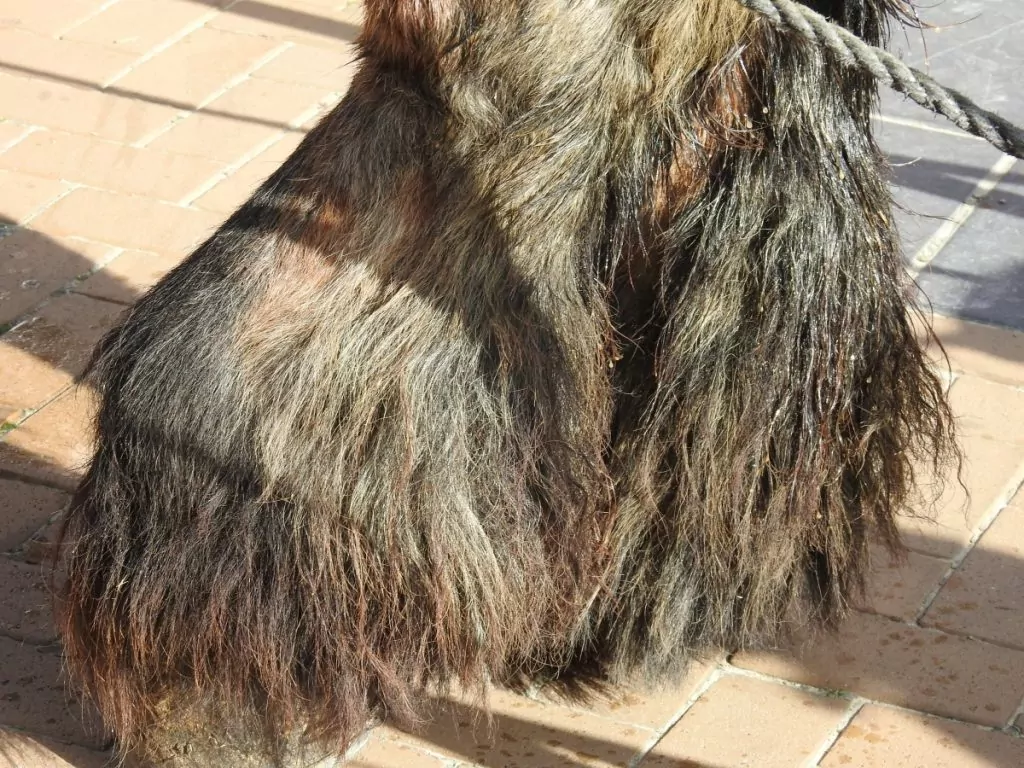
In the past, the tail was docked to prevent it from becoming entangled in carts and other tools. This is now prohibited.
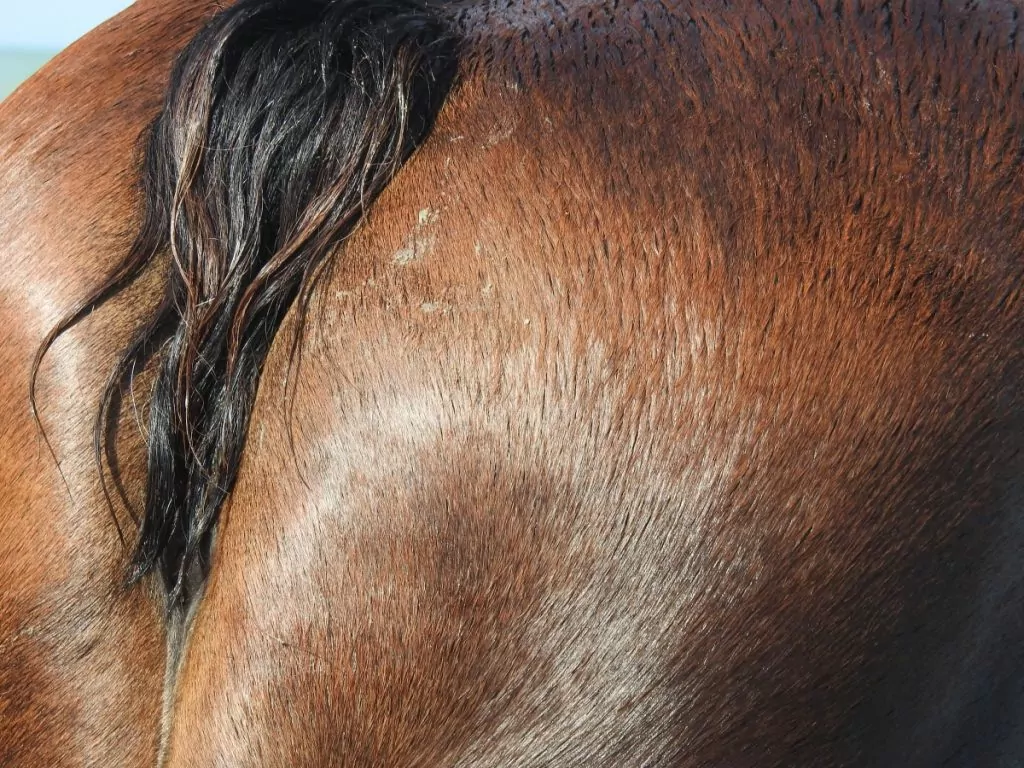
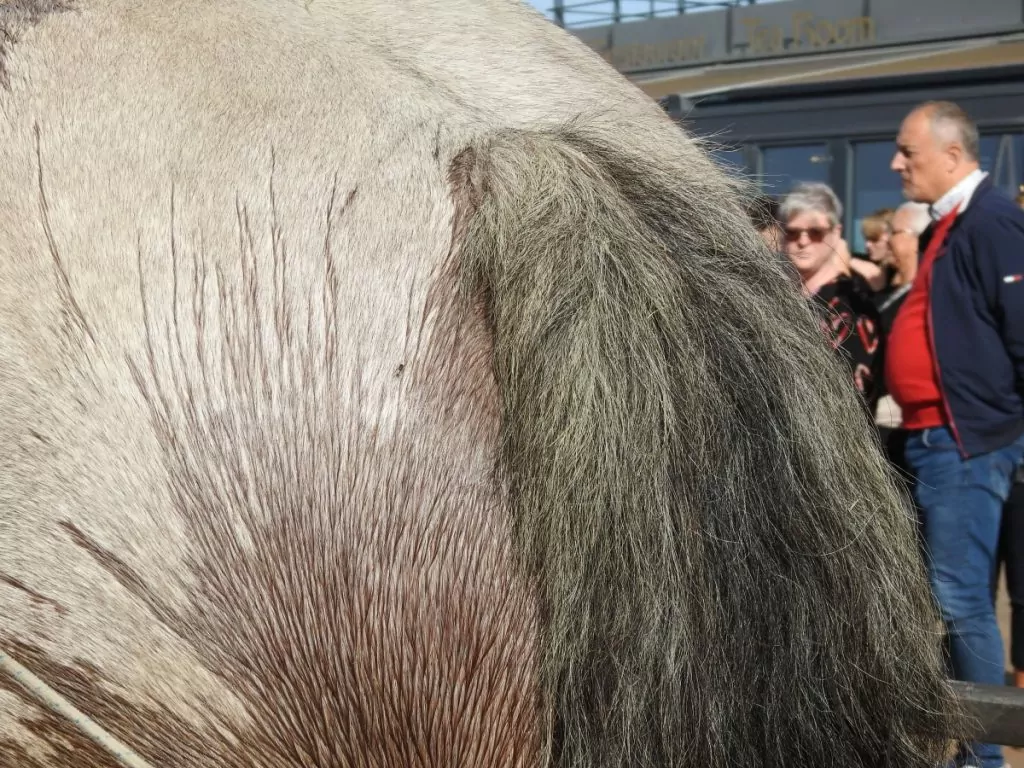
After finishing trawling, the nets are visible, on this day the catch was small, the nets also contained mussels, tiny crabs, jellyfish and a few fish, all except the prawns are thrown back into the sea.
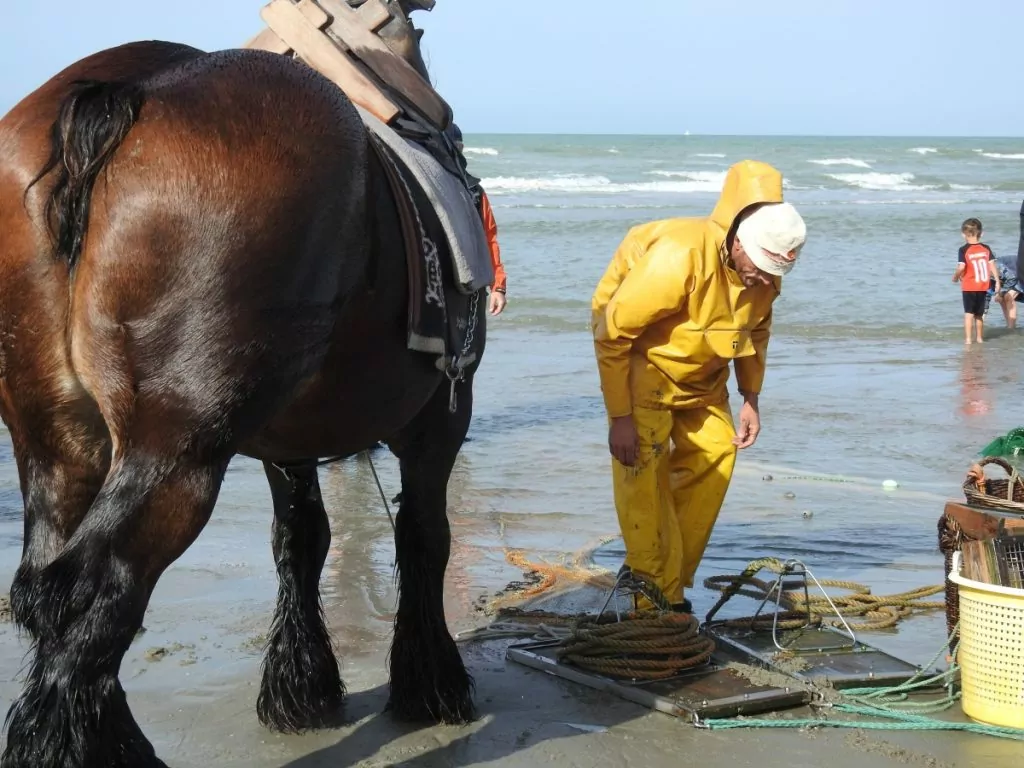
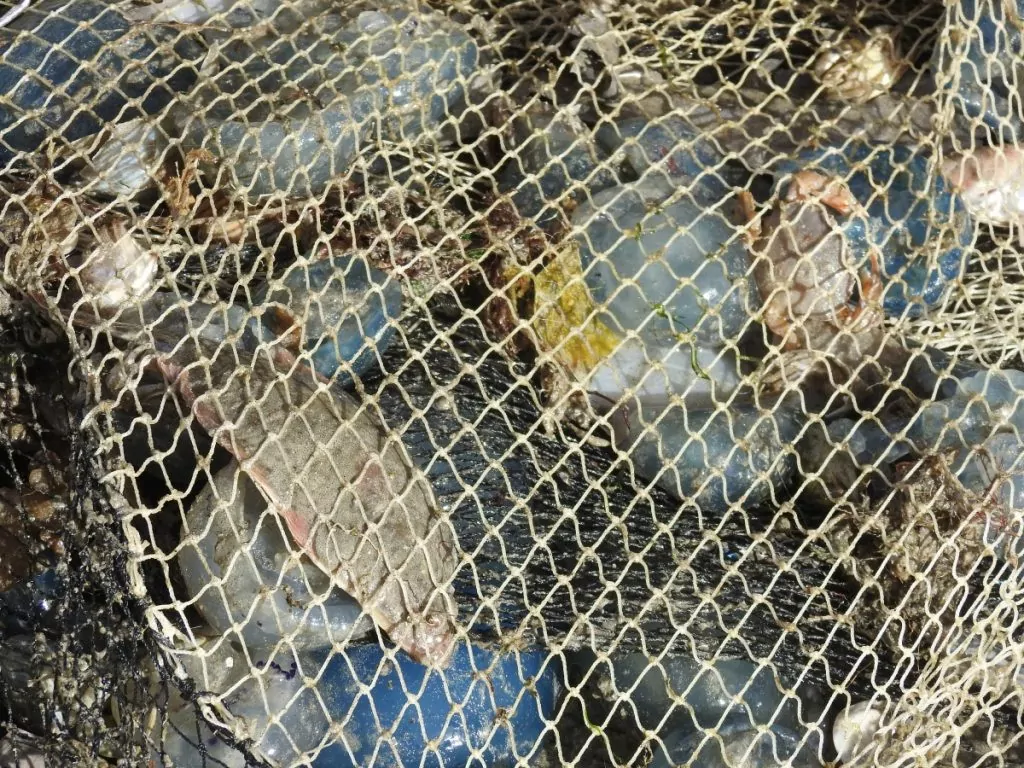
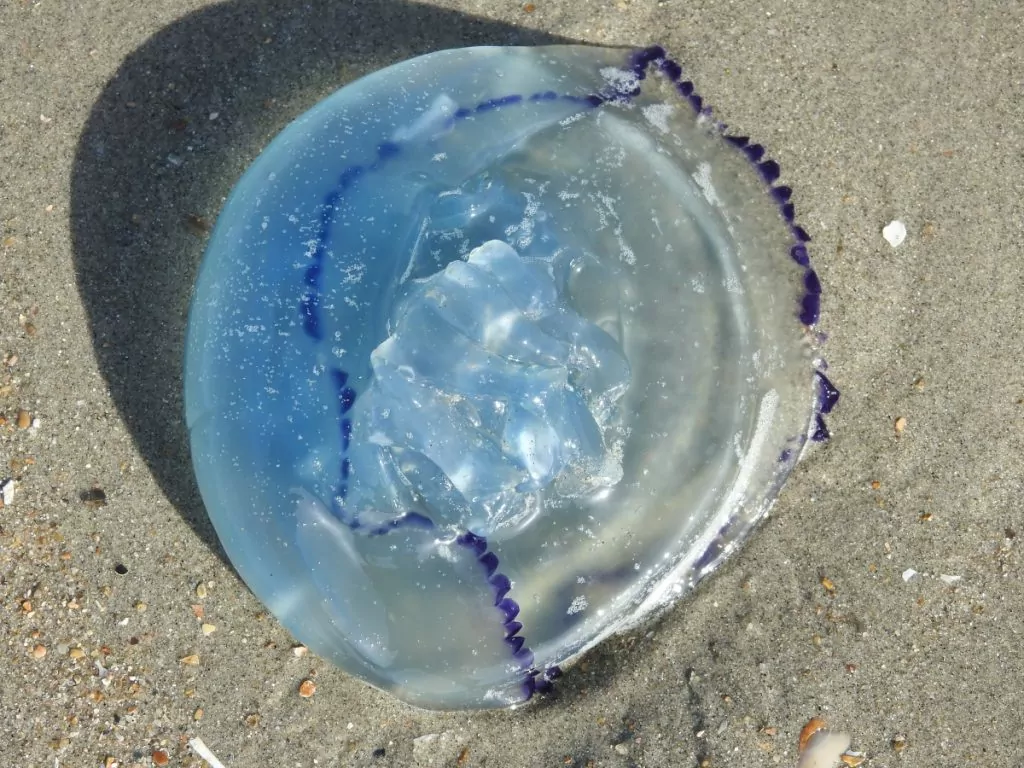
On a good day, a crew can reel in around 10 kilos of shrimp of the species sand shrimp or horse shrimp, which are much smaller than ordinary shrimp. You can catch shrimp all months of the year except in the summer when the sea is too warm.
The small catch of the day is cleaned of all non-shrimp, boiled in seawater and turns a slightly brown-orange colour. The cleaning process is a deluxe pilgrimage.
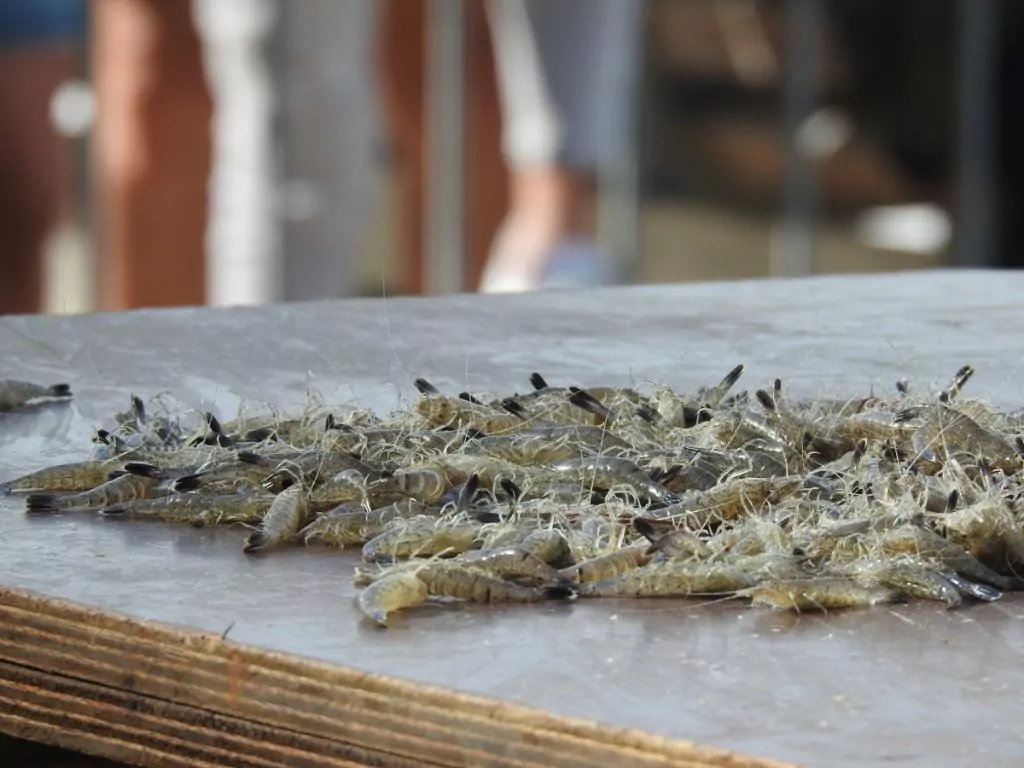
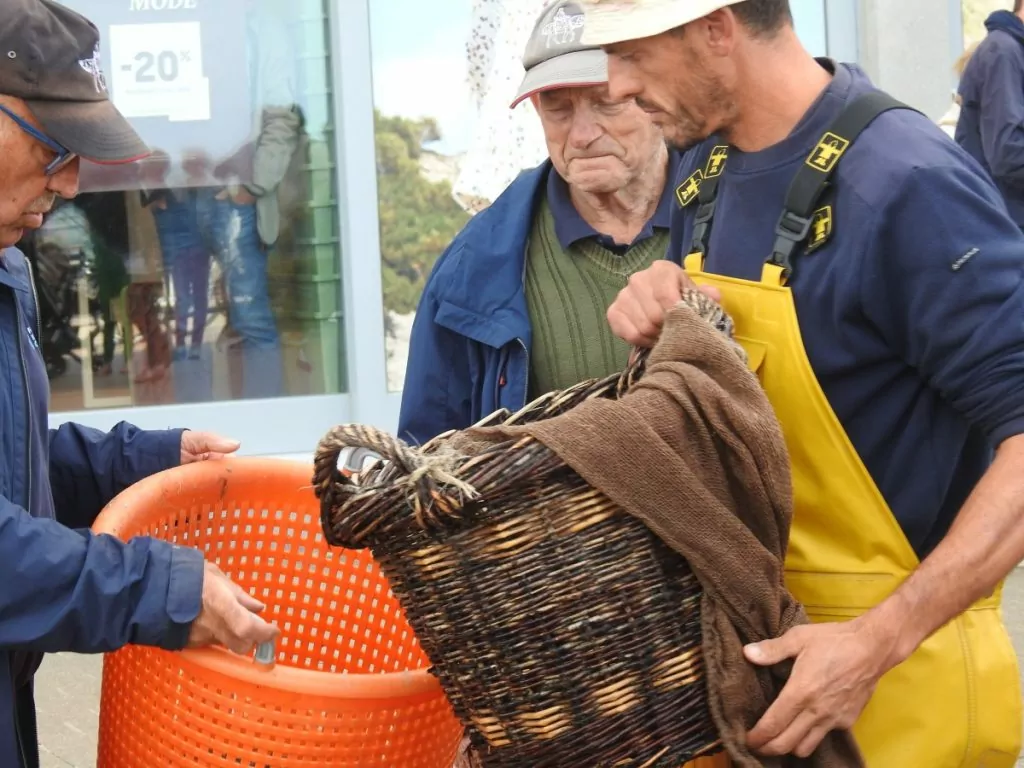
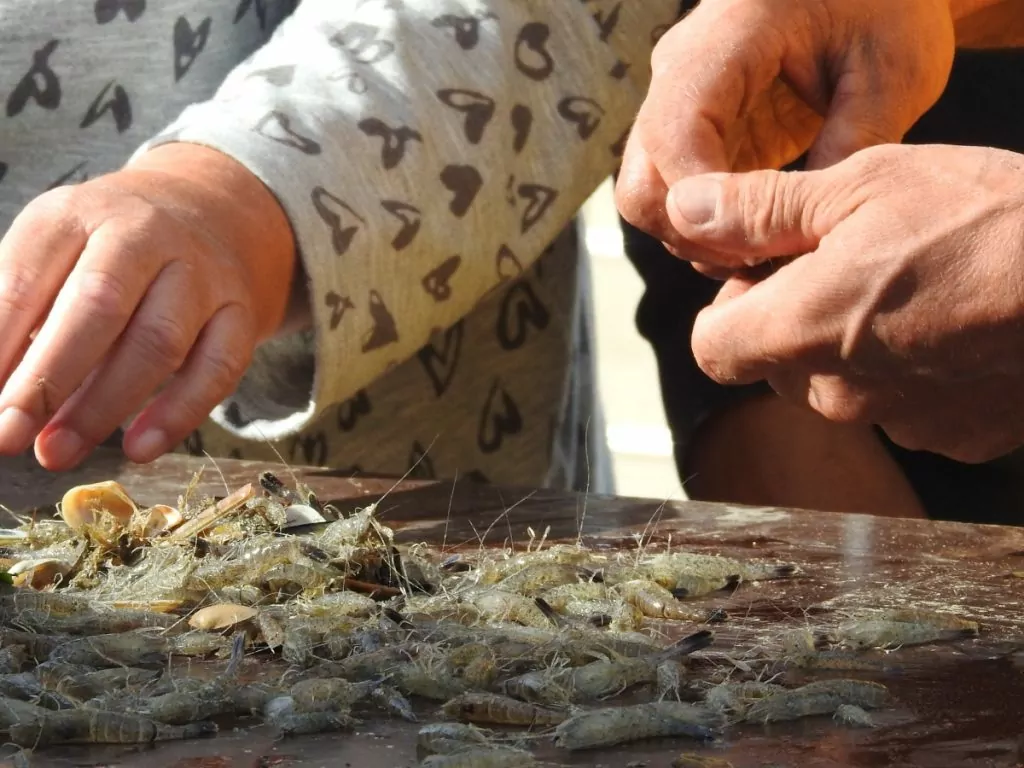
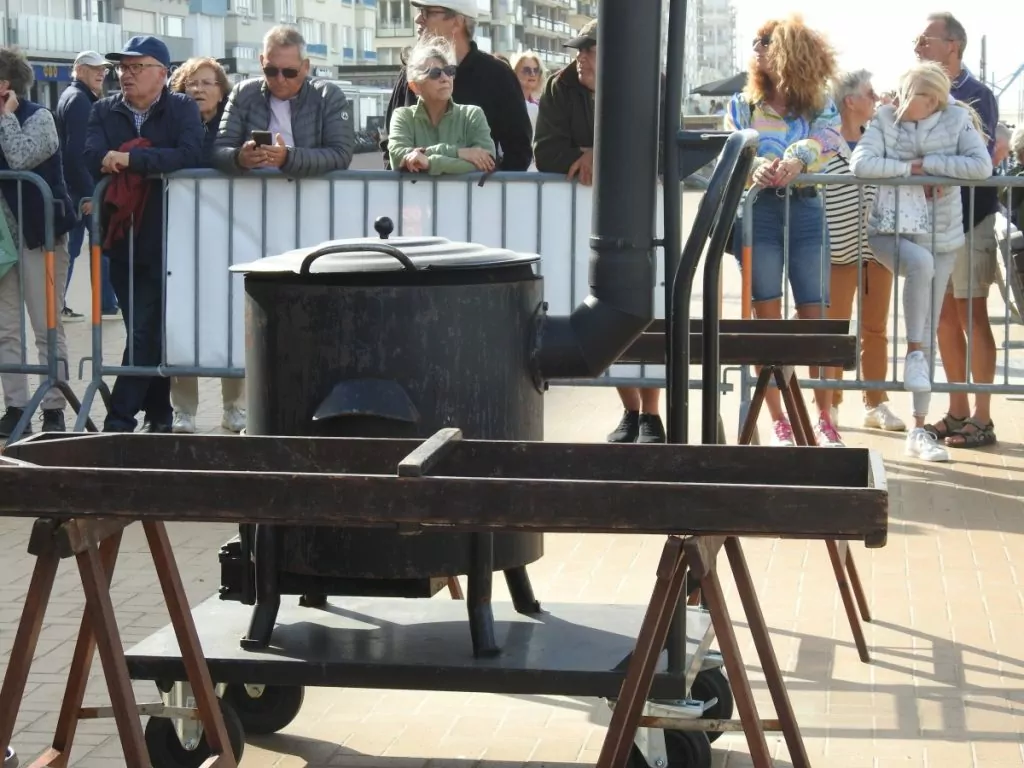
Here in Belgium we call these tiny creatures 'grijse garnalen', or grey shrimp, and they are a delicacy that is usually eaten as a cocktail with tomatoes and mayonnaise or used as an ingredient in shrimp croquettes. The daily price on the coast is 270 euros per kilo for unpeeled shrimp.
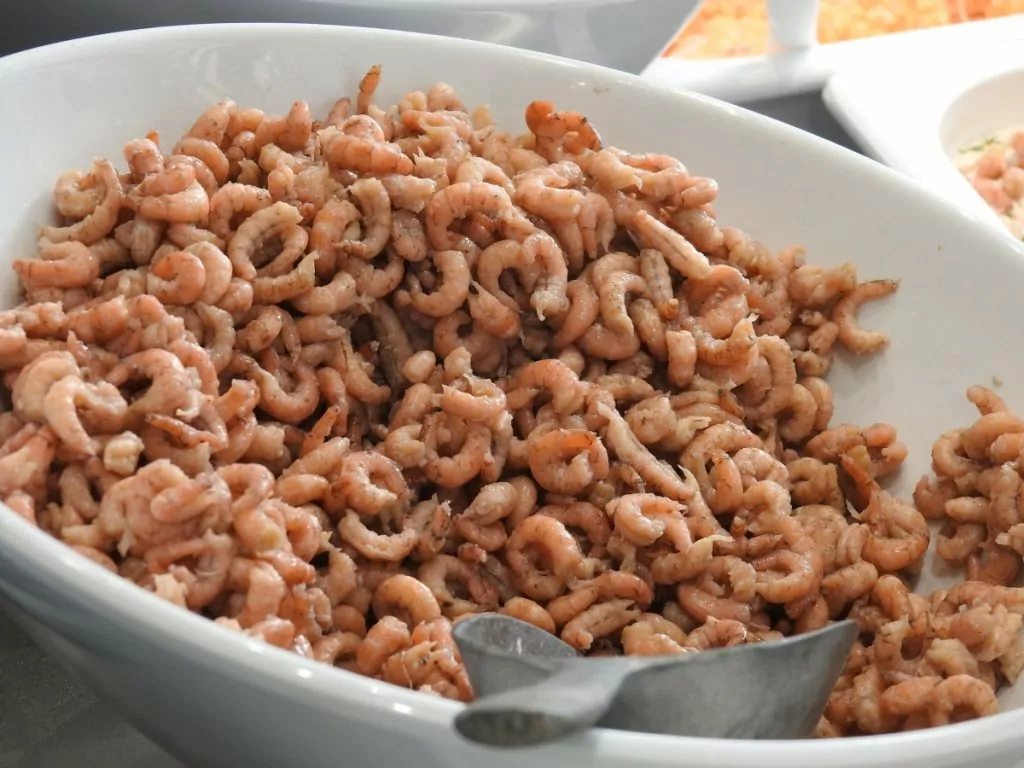
Koksijde is one of the many towns along Belgium's 67 kilometres of coastline.
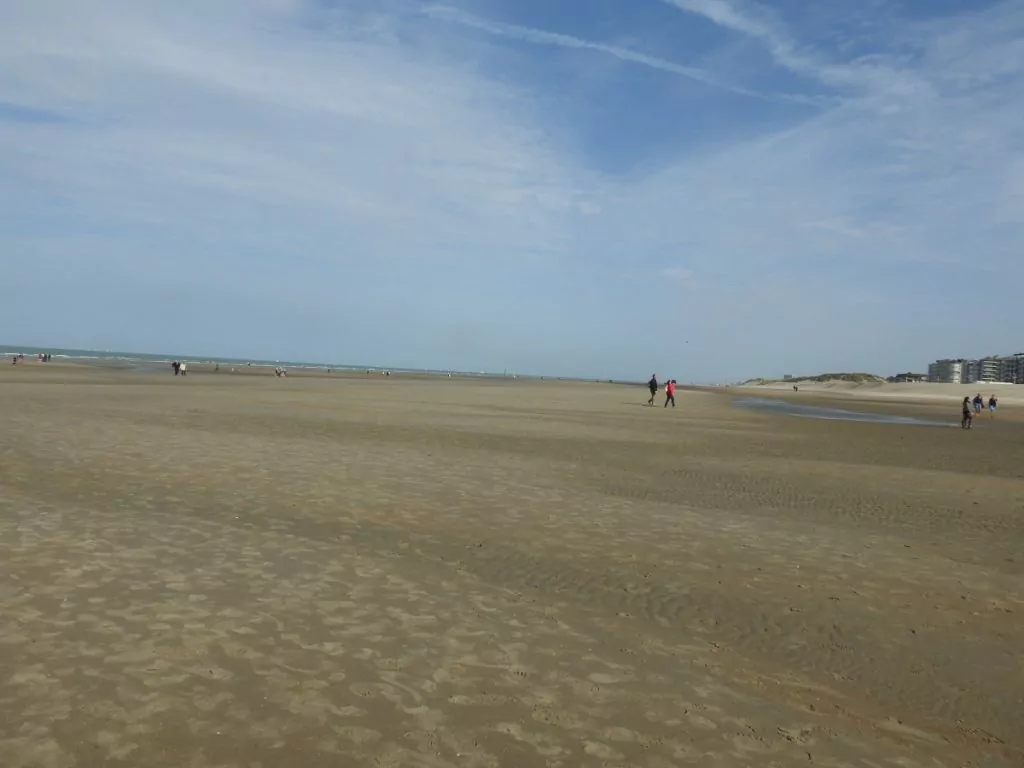
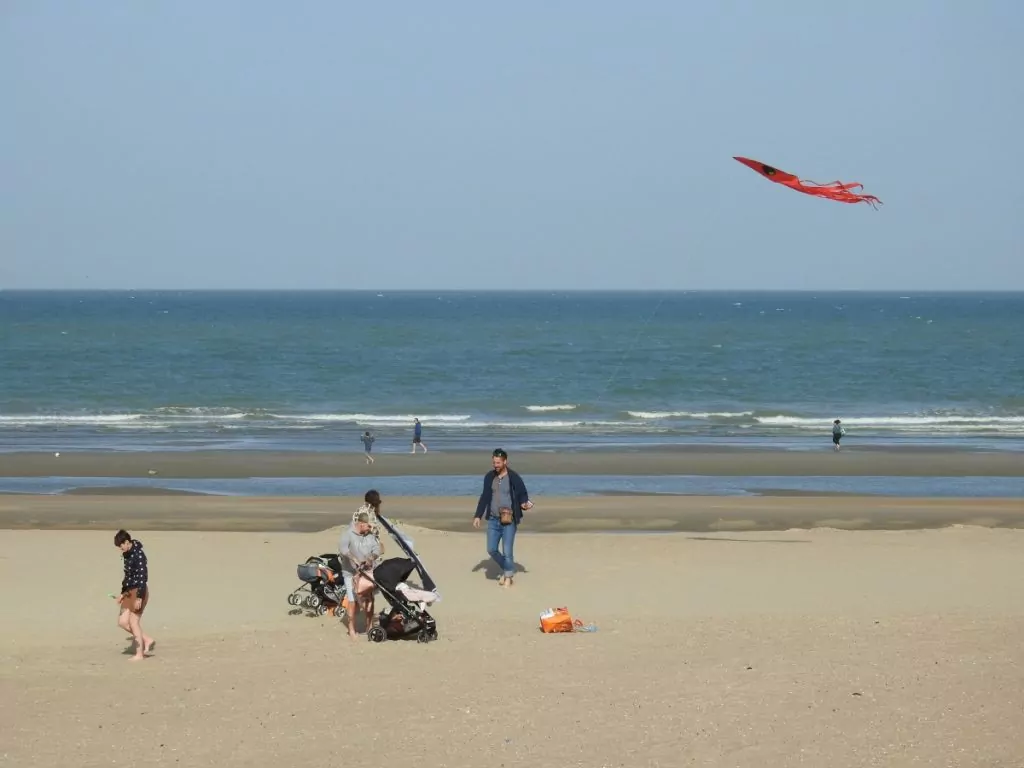
You can easily ride the coastal tram between the different towns, which to me look pretty much the same, i.e. broken and characterless.
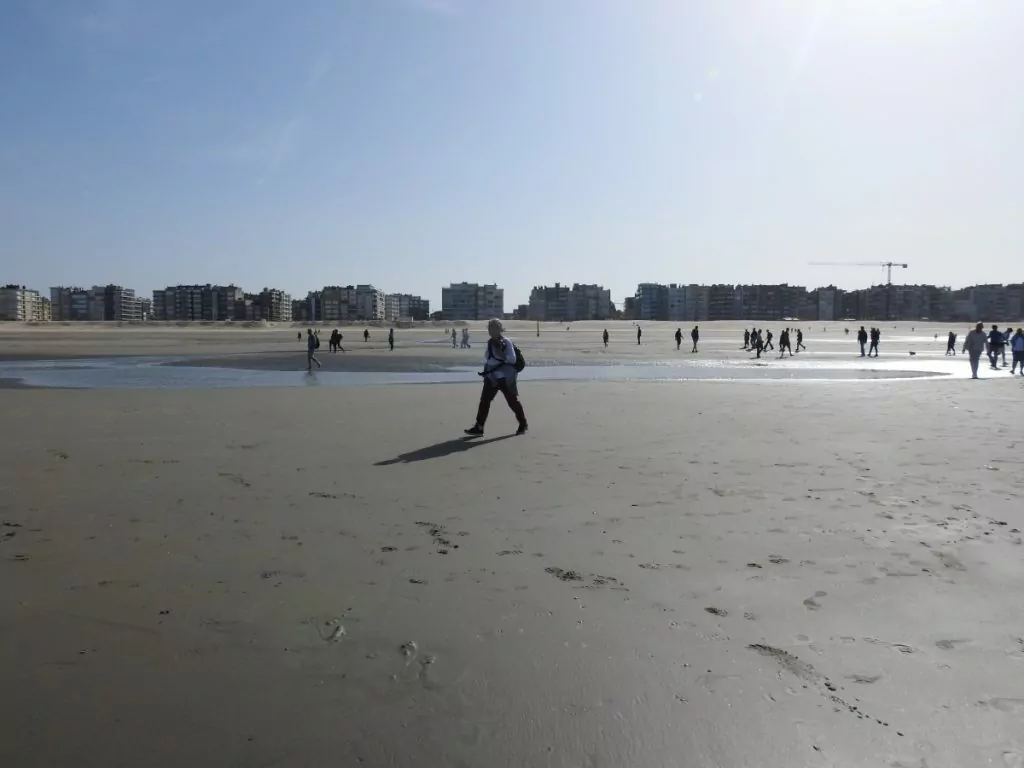
Along the beach, it's a long walk lined with restaurants, cafés and knick-knack shops. High-rise apartment complexes for short or long term rentals, ugh, so disgustingly ugly.
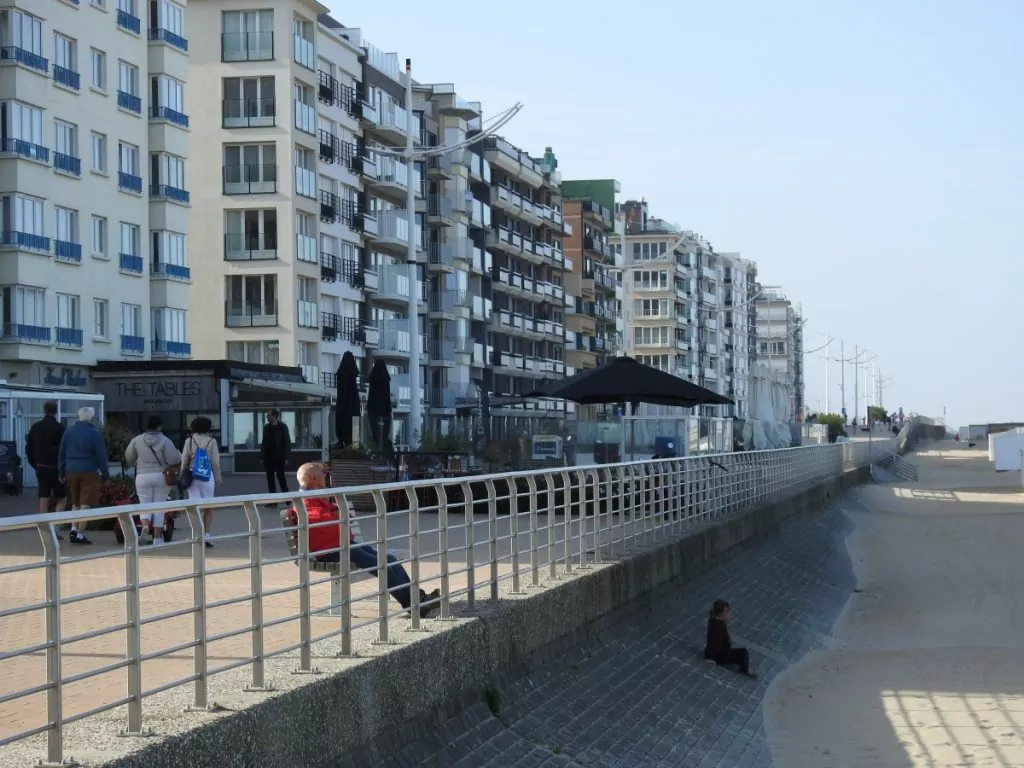
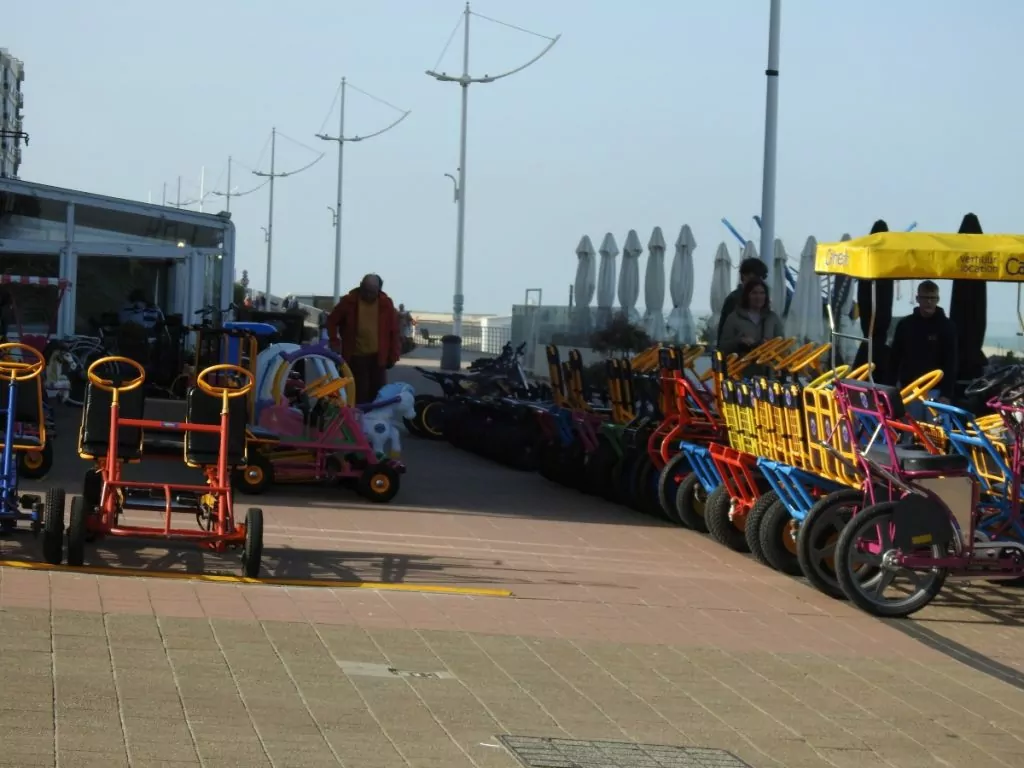
It is expensive, very expensive, but this is where the Belgians go and in the summer the traffic jams are enormous. The day I was there, on 7 October, the weather was brilliant and 23 degrees and still warm in the sea, but swimming is just to forget because in Belgium it is forbidden to swim if there are no lifeguards. At least I waded out to my thighs to get some nice pictures.
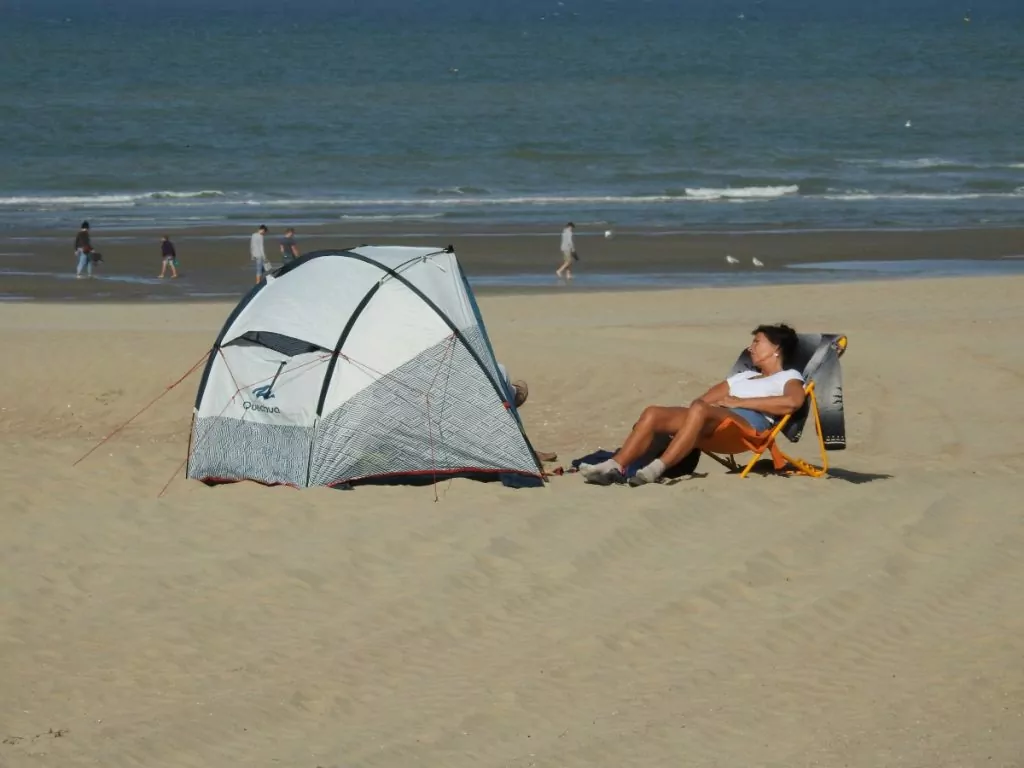
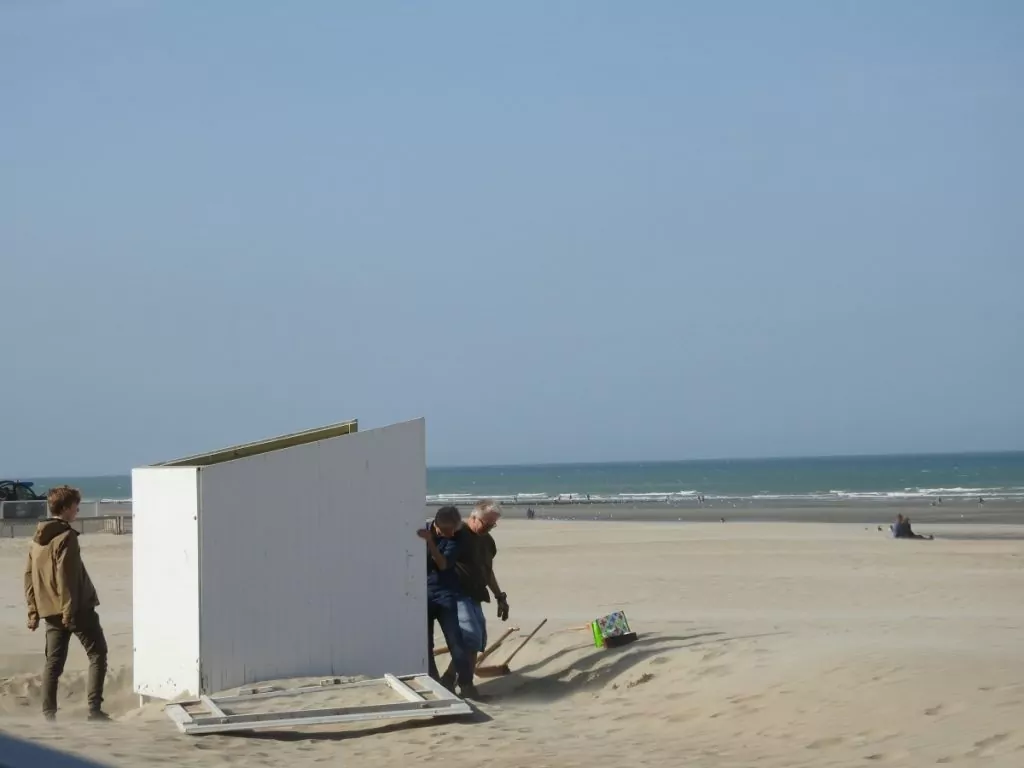
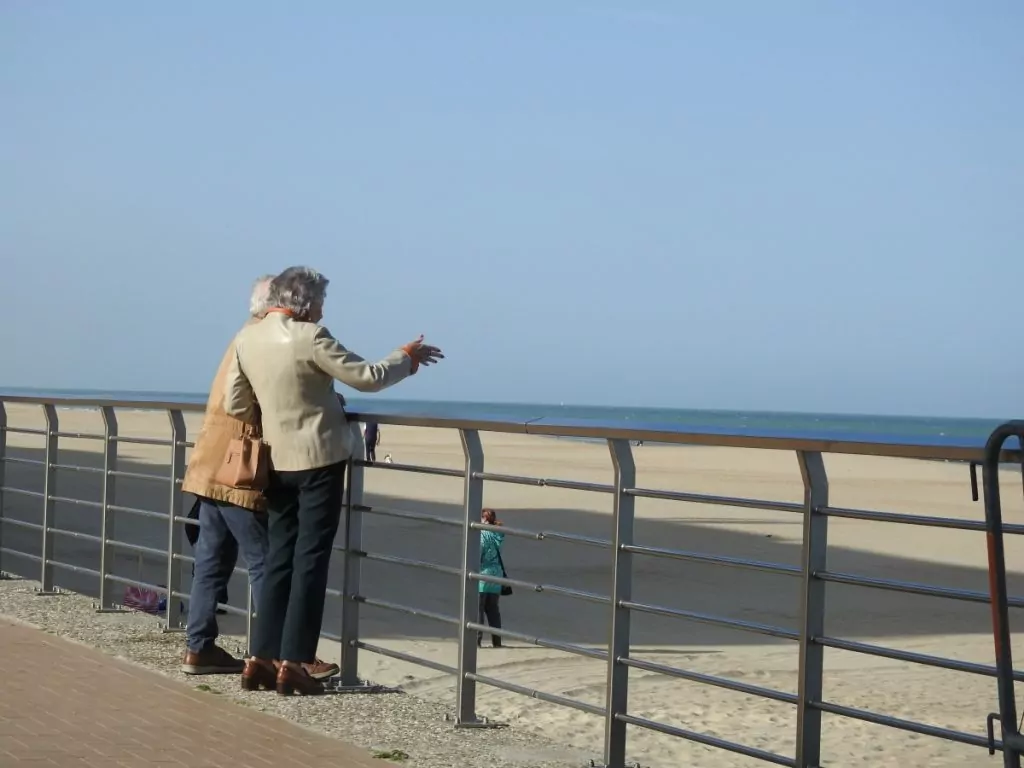
The coastal season is basically over, although the shrimp festival in mid-October attracts thousands of visitors. Now the coast closes down and the residents hunker down until late spring arrives. The fine horses and their skilled riders also get some respite until the fishing demonstrations begin again in April.
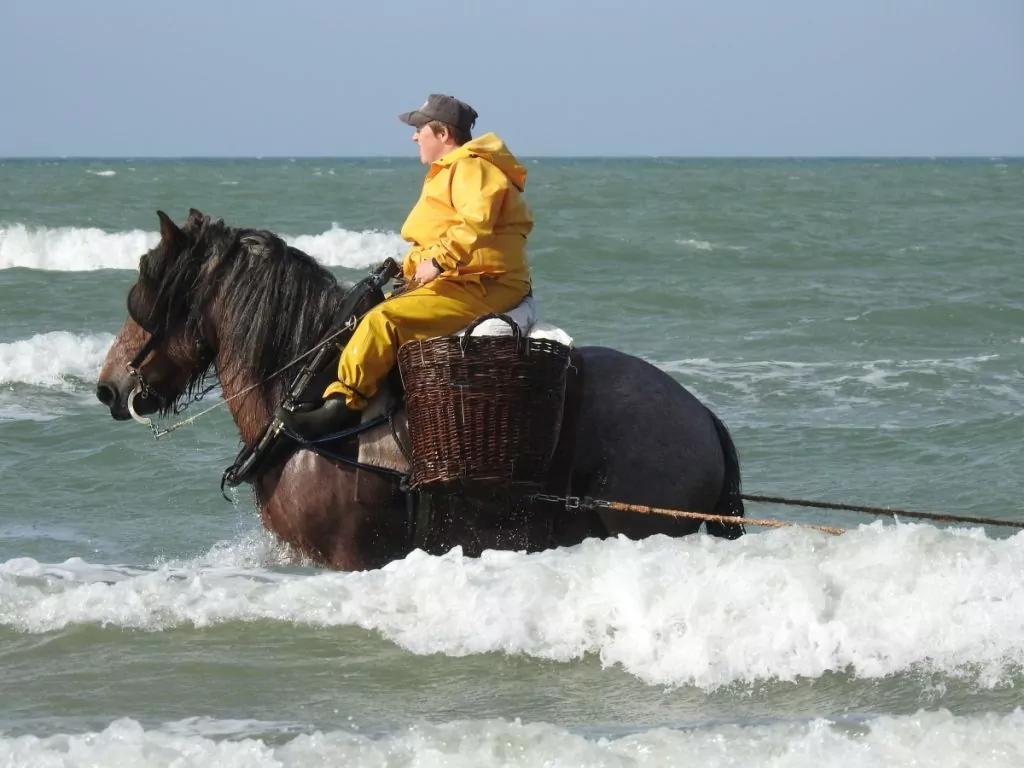
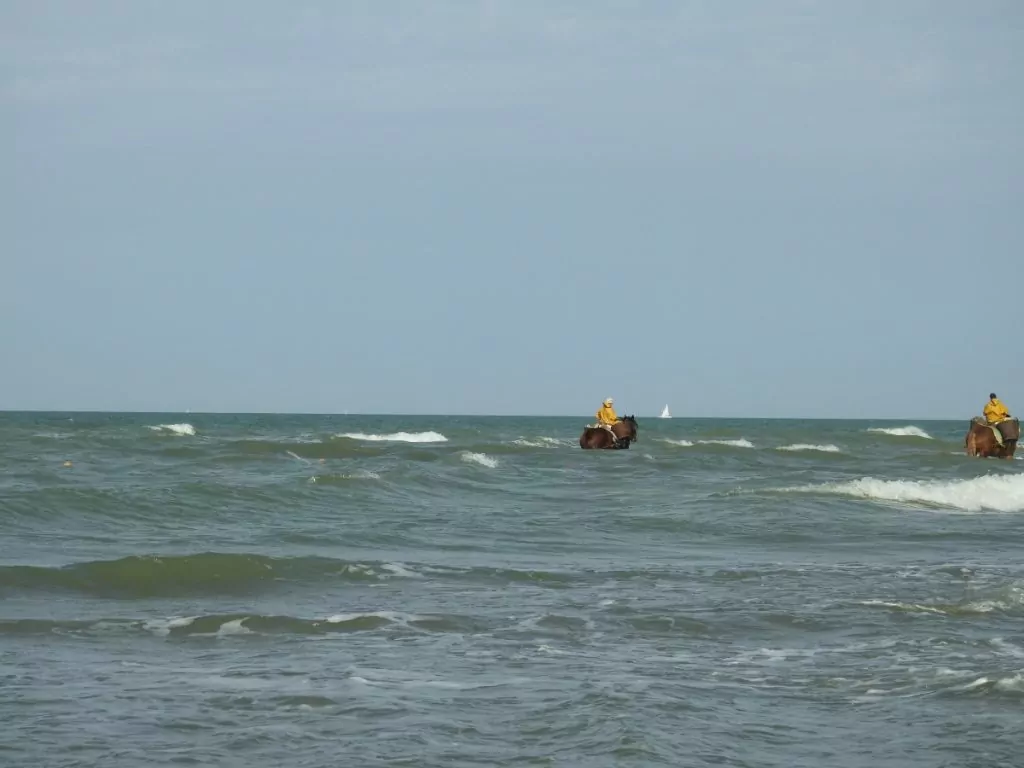
*The UNESCO Cultural Heritage List is therefore not the same as their World Heritage List. The cultural list is more about the preservation of traditions and knowledge.
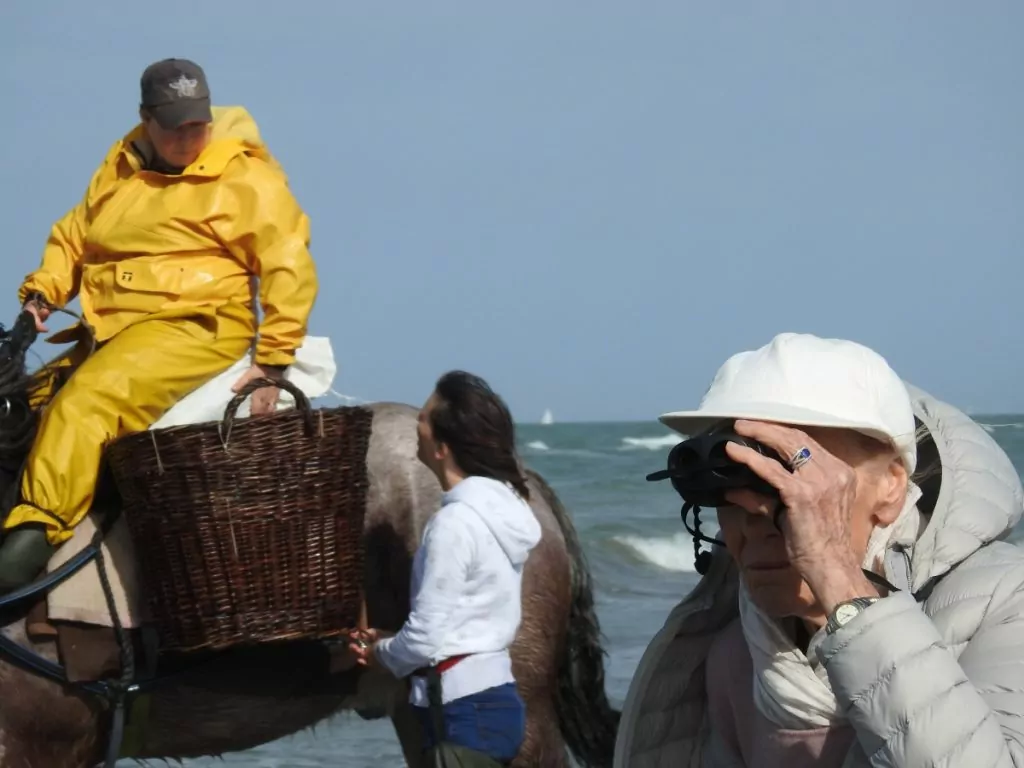
Practicalities of shrimp fishing on horseback in Belgium
- Getting here: Summertime best by train as traffic is terrible. From Antwerp 3 hours 45 minutes, from Brussels 2 hours 45 minutes.
- Accommodation: Everything from camping to luxury, in summer book well in advance even on weekends.
- Good to know: The shrimpers are free to watch, they mostly leave from Oostduinkerke, dates and times can be found on: NAVIGO National Fisheries Museum (navigomuseum.be)


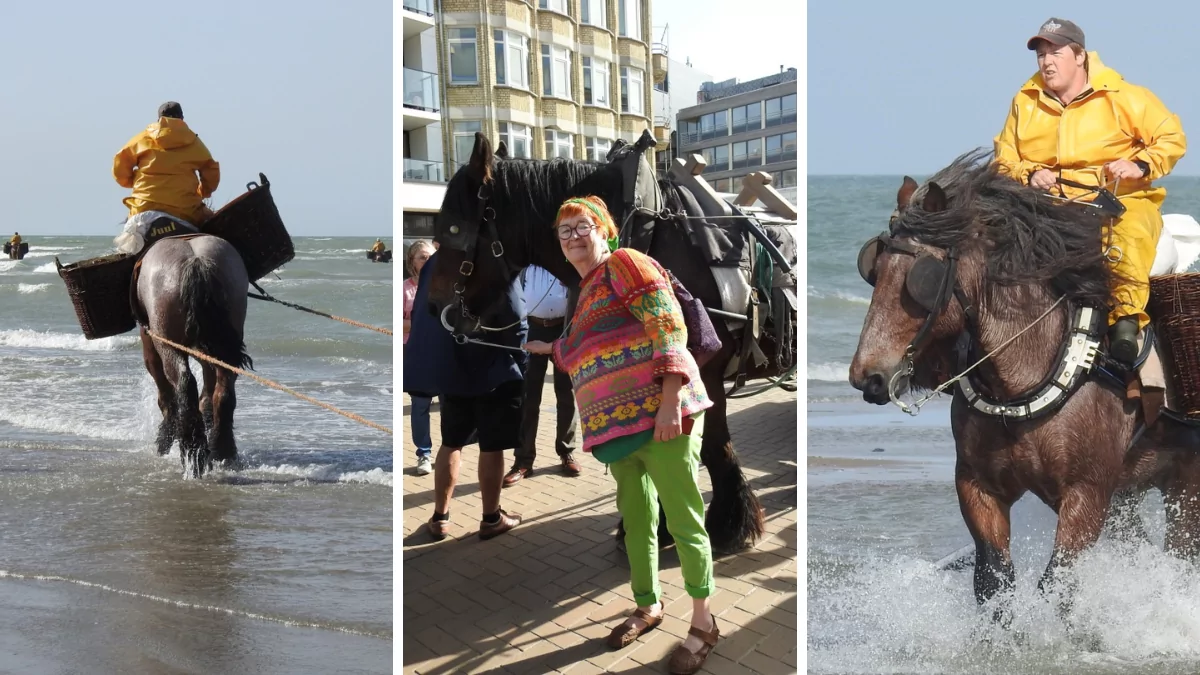






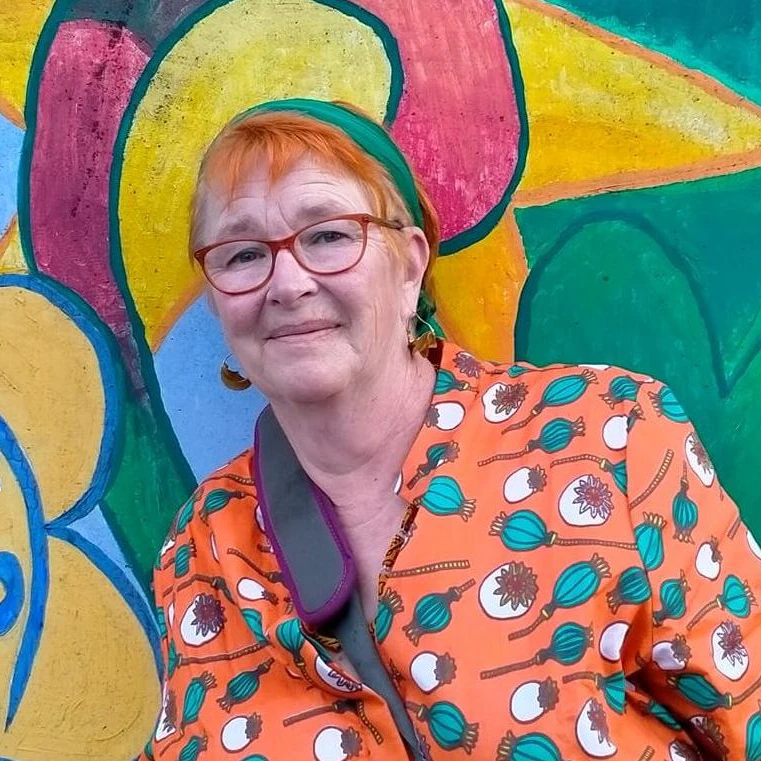
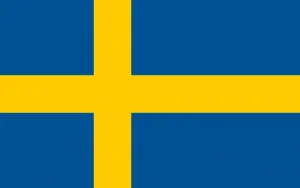
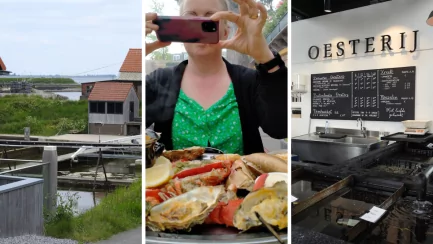
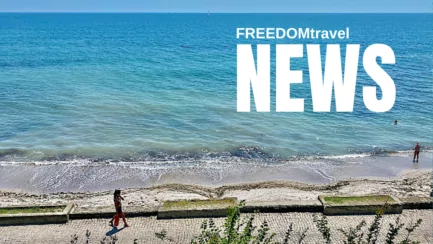
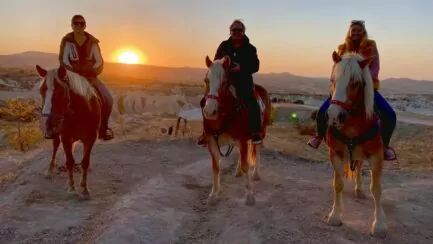
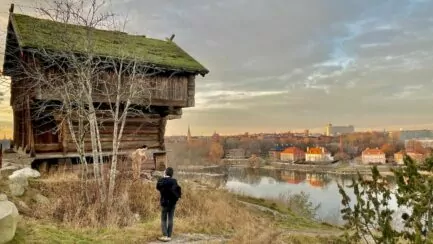




Annar Aas says:
Nice with. Anna's reports sometimes
01 November 2023 - 9:12
Anna Nilsson Spets says:
Thank you for reading !
01 November 2023 - 18:42
Only British says:
Yes, I completely agree with Anna. The coast is ruined almost everywhere except along the borders in the north and south... The shrimp fish are really super cool but otherwise we mostly stayed in Blankenberge with its small pier when we took the train to the sea on weekends. Ugly houses there too but mixed with more cosiness than in Ostend etc.
01 November 2023 - 10:25
Anna Nilsson Spets says:
Yes indeed, compared to the Swedish coast... I'm not so fond of Blankenberge either, but better than Koksijde and Ostend. Must willingly admit that the first time I was on the coast I was in shock how miserably impersonal it is.
01 November 2023 - 18:45
Lena - good for the soul says:
Well, that's interesting. I've never heard of that way of fishing shrimp.
Hug Lena
01 November 2023 - 10:26
Anna Nilsson Spets says:
No, it's specifically for this part of Europe and I've never seen grey shrimps like that in Sweden, they're delicious but tricky to clean.
02 November 2023 - 0:33
BP says:
What an interesting post. Never heard of that tradition. As usual, your photos are absolutely stunning. I like the Brabant "shoes". They look like boots/shoes you have in Lapland, you know the ones with "beaks".
Then I have to say that the burly guy in the first pictures has a twin brother in Täby. Or maybe it's a double. Speaking of which, I saw a woman in Täby Centrum today who could have been you - same hair colour and colourful clothes.
01 November 2023 - 17:46
Anna Nilsson Spets says:
Thanks for the nice comments. The burly guy is actually a woman, believe it or not... Interesting with a double in Täby, You can sneak a look so I can see if we are similar !
02 November 2023 - 0:32
Mr Sven Blomqvist says:
Thank you for the nice report, we will be in that area this summer, there are some special times that shrimp fishing occurs
20 June 2024 - 10:05
Anna Nilsson Spets says:
Find the time and place here ::https://www.navigomuseum.be/en/when-do-horseback-fishers-go-out-sea
20 June 2024 - 18:00